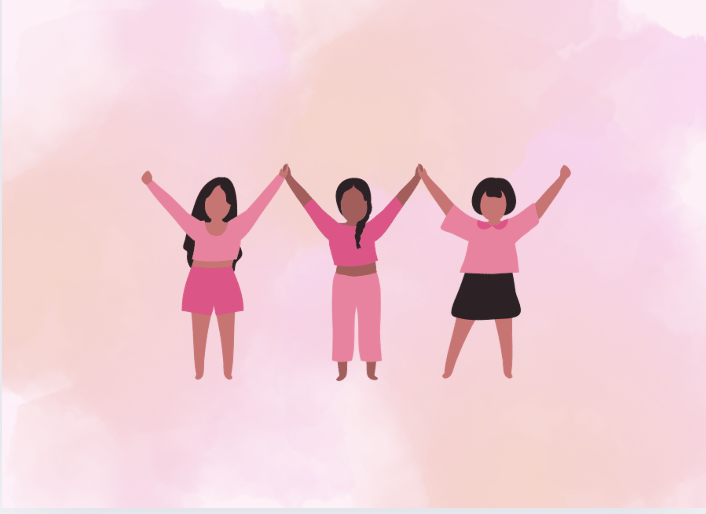Think of a movie hero. Any hero. Let me take a guess – you’re thinking of strong, dominant man, one who is powerful and ready to save the world. Chances are, they also happen to be white. Before I watched Marvel’s recent film, Across the Spider-Verse, my pick would have also fit that description. They may have been Superman, or Captain America, or any other hero, but they would have been a white male. But this stereotypical hero, this archetype that widely encompasses the media, is one that Across the Spider-Verse tries, quite successfully, to change, through multiple representations of diverse perspectives, and characters that help the audience to understand what diversity means and how it is prominent throughout the world.
The first character that promotes diversity to the audience is Miles Morales. He is of African-America descent, and throughout the story, takes the role of the hero. In the 2018 movie, Into the SpiderVerse, he is bitten by a radioactive spider, which resulted in him becoming spiderman. Although he initially did not want to be the hero, he is forced to take up the position after Peter Parker, the original spiderman, dies, and he ends up basically saving the world to become spiderman. His story shines a light on diversity, allowing audiences to understand that people from all places can be strong and able to be heroes. It impacts them by shaping preconceived notions from existing racist stereotypes in the media, where black people are targeted and shunned. It also largely challenges the dominant idea and history of superheros being white by instead allowing a black character to take the place. Marvel is a key example, where Across the Spider-verse is one of the first Marvel movies to have a black hero. A question is posed – will movies in the future continue to follow this trend? Will diversity still be encouraged? I hope so. This movie is part of Marvels’ encouragement to promote diversity. Miles Morales represents how superheroes can be diverse but still be effective, however he is just one part of the movie’s message about diversity.
Across the Spider-Verse also recognises and empowers women as heroes, along with opposing the traditional stereotype of masculinity and strength being required in heroes. Gwen Stacy in particular is another hero of the story. Similarly to Miles Morales, she is bitten by a radioactive spider which ends up with her becoming spider-woman. She does similar things to Miles, defending the cities against villains such as Doctor Octopus and the Vulture. As a female hero, she impacts the audiences by breaking social gender norms, countering the vast gendered racism that exists in the modern world. Across literature and media for centuries, the archetype of the hero is dominantly shown as male – being strong, masculine, and brave are key characteristics of what allows someone to be a hero, and Marvel in particular is reputable for having their movies dominated by male heroes. She is described online as “one of Marvel’s most notable and powerful female heroes”. In these ways, Across the Spider-Verse helps to empower women and recognise their abilities beyond the male stereotype of a hero.
Although many audiences see both the hero of Spiderman (Miles Morales) being a person of colour and the hero of Spiderwoman (Gwen Stacy) being a woman as Marvel’s key efforts to stop both racism and gendered racism in the world, there is another, larger scale effort to address the issue, and celebrate diversity across the entire world. This is the idea of the multiverse, and it is one of the central ideas of the story. The idea states that there are not just one, but an infinite number of Spider-verses, and therefore an infinite number of Spider-men and Spider-women throughout the universe, many of which are seen as Miles Morales navigates this universe. For example, in his journey through the multiverse, Miles encounters a future spiderman from the year 2099, an Indian spiderman, a punk rockstar spiderman, and so many more. The very idea that there are an infinite number of spidermen is a clear attempt at portraying diversity, and the audiences are so clearly shown how the world and the universe is diverse, and that heroes can be of any race and gender. It encourages people from all across the world to become their own heroes. The concept of spidermen existing from everywhere in the world represents a wide variety of diverse perspectives, and encompasses the key theme of diversity from throughout the movie, allowing for audiences to understand that diversity is a reality of the world and everyone is different, but that it is a good thing.
Historically, Marvel has been known for following a traditional hero idea, one that is both white and male, but the movie Across the Spider-verse helps to change this and shape the audience’s viewpoints. With the Spiderman of the movie being African-America, a similar Spider-woman showing how women can also be heroes, and the concept of a multiverse allowing for multiculturalism and diversity to shine through the fact that anyone can be a hero, the movie effectively impacts audiences’ understanding of diversity, and helps them to recognise and accept it, whilst ultimately breaking their own prejudices and stereotypes as they enjoy the movie and see how powerful diversity is.

